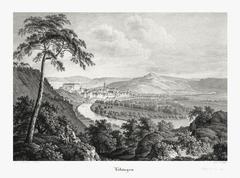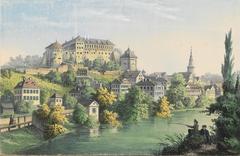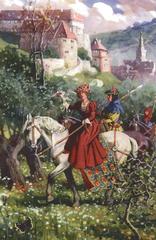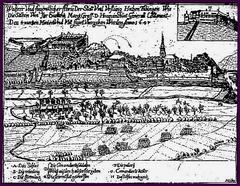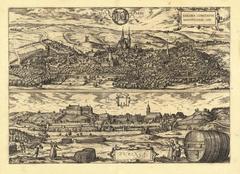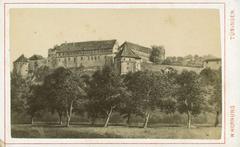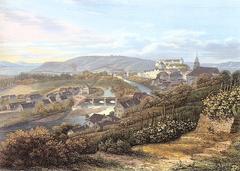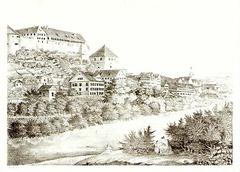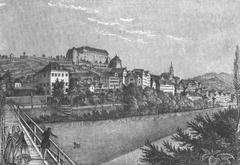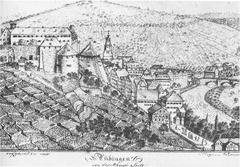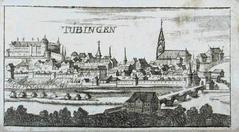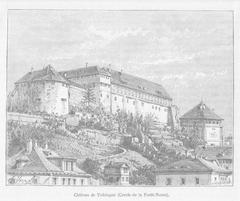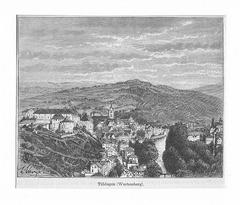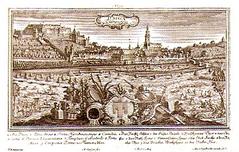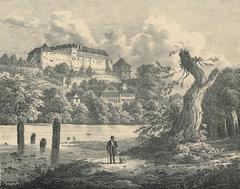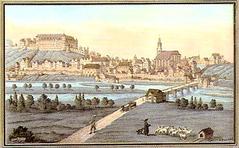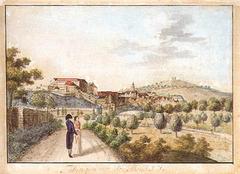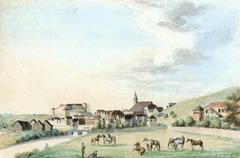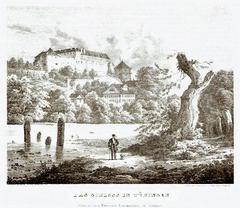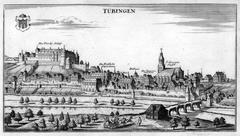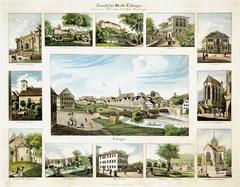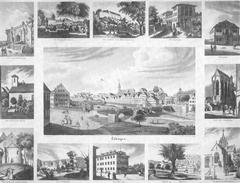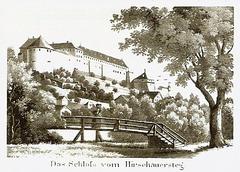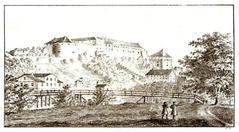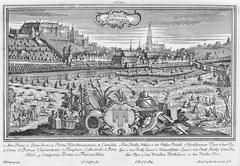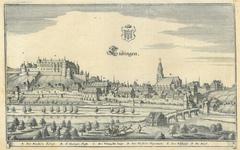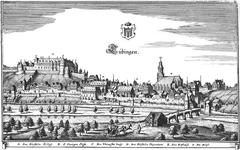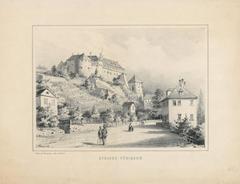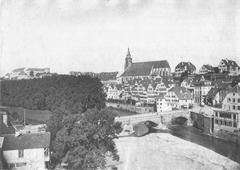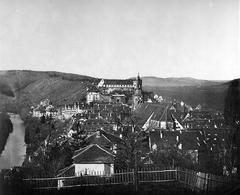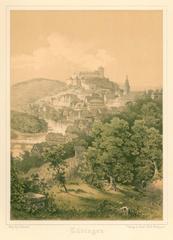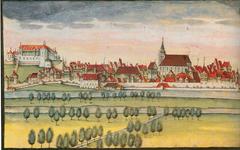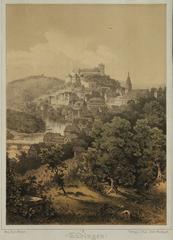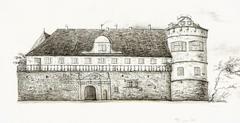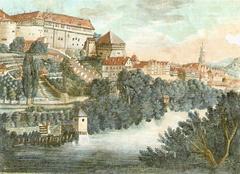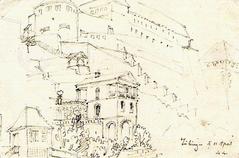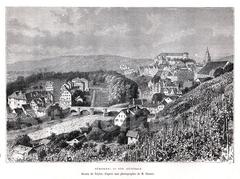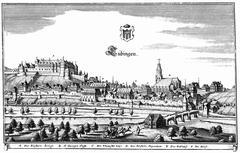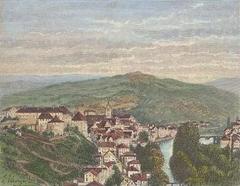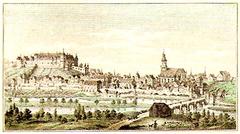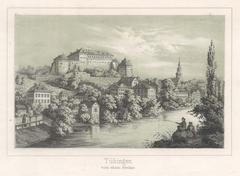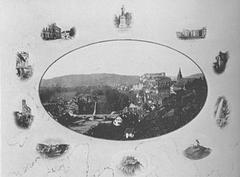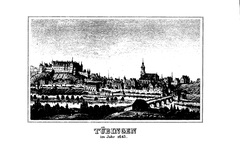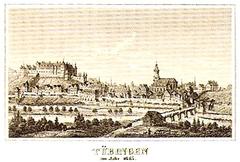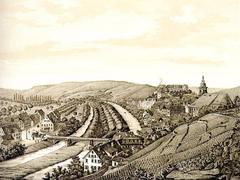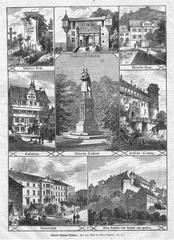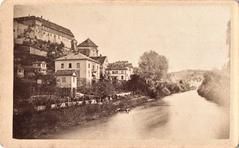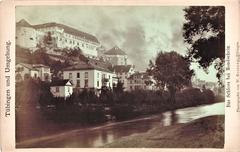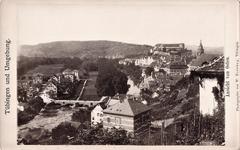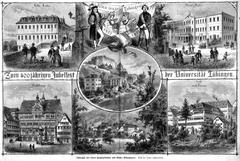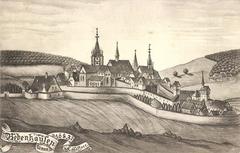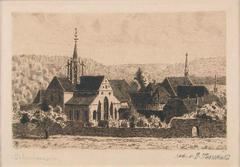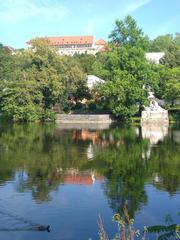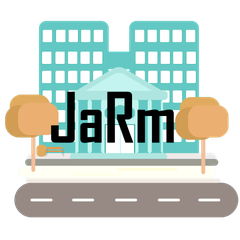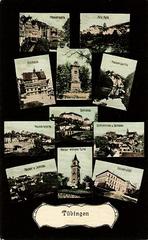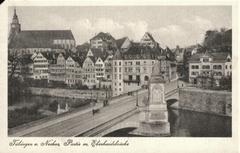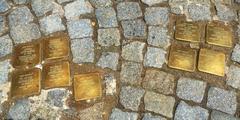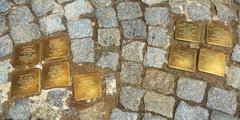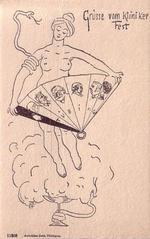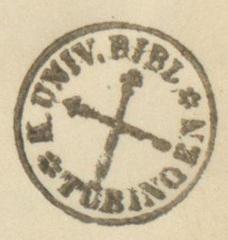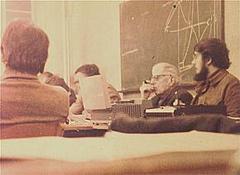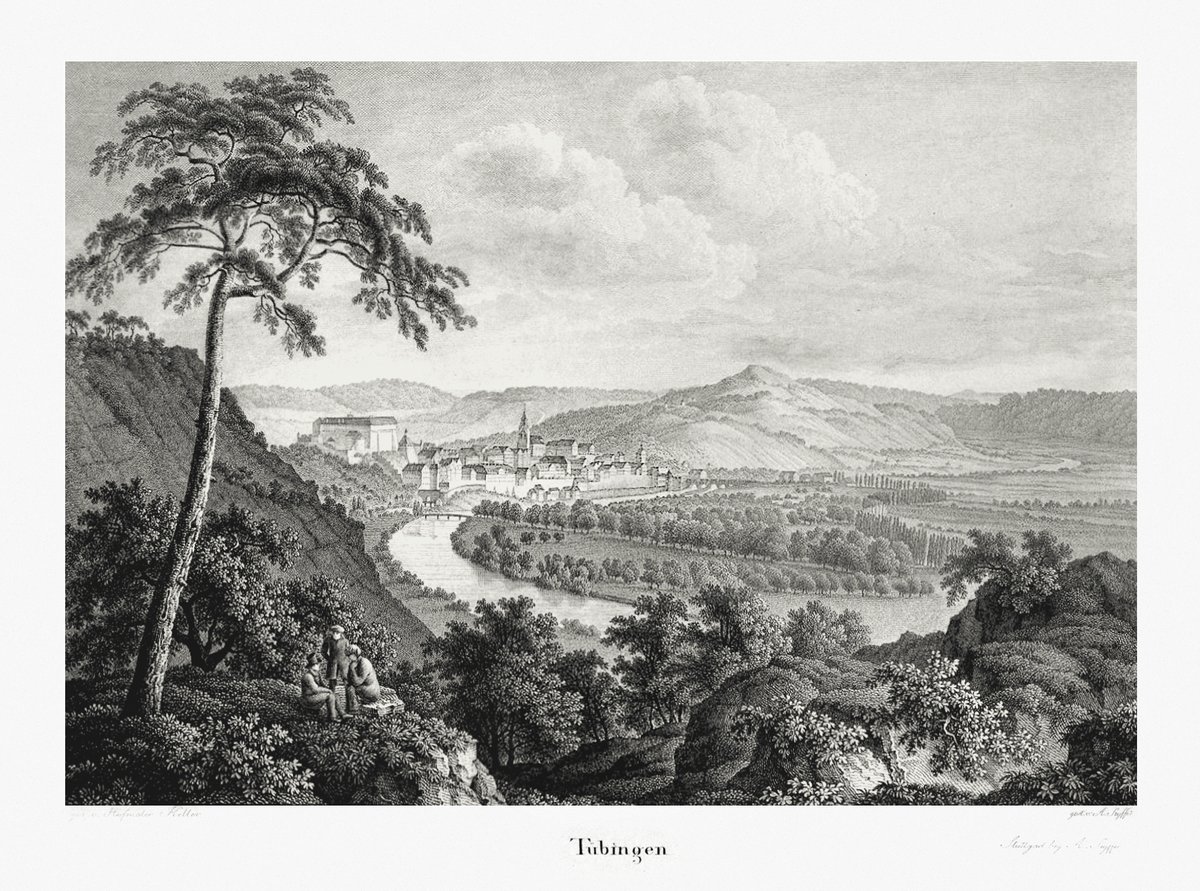
Schloss Hohentübingen: Visiting Hours, Tickets & In-Depth Guide to Tübingen’s Landmark Castle
Date: 14/06/2025
Introduction
Perched atop Schlossberg hill and overlooking the red-roofed townscape of Tübingen, Schloss Hohentübingen is a striking symbol of Swabian history, Renaissance architecture, and academic heritage. With roots reaching back to the early Middle Ages, the castle has evolved from a fortified noble residence to a Renaissance palace and, today, stands as both a museum and an academic institution at the heart of the University of Tübingen. Home to exceptional archaeological collections and a dynamic schedule of cultural events, Schloss Hohentübingen offers an immersive experience for history buffs, architecture enthusiasts, and casual travellers alike.
This comprehensive guide details everything you need to plan your visit: updated opening hours, ticketing options, accessibility, guided tours, and what to expect inside the Museum Alte Kulturen. For the latest updates, always check the University Museum Tübingen website and Visit Tübingen.
Table of Contents
- Introduction
- Historical Overview
- Architecture & Features
- Museum Alte Kulturen: Top Exhibits
- Visiting Information
- Travel Tips & Nearby Attractions
- Frequently Asked Questions (FAQ)
- Conclusion
- Source List
Historical Overview
Medieval Foundations
Schloss Hohentübingen’s earliest fortifications date to around 1037, established by the Counts of Tübingen. Wooden defenses were soon replaced by stone walls and moats, and by 1078, the castle was already a focal point in imperial power struggles, notably besieged during the Investiture Controversy (Burgenarchiv.de; Wikipedia). Throughout the High Middle Ages, it served as the stronghold of the powerful Counts Palatine of Tübingen, their strategic position controlling the Neckar Valley (Spotting History).
Renaissance Transformation
Financial woes led the Counts of Tübingen to sell the castle to the Württemberg dynasty in 1342 (Tübingen Info). Under Württemberg rule, the fortress was extensively rebuilt. The most significant changes came in the 16th century, when Duke Ulrich and later Duke Christoph transformed the medieval structure into a Renaissance four-winged palace, complete with bastions, arcaded courtyards, and the famous 1607 triumphal arch (Burgenarchiv.de). The old fortifications were modernized to withstand artillery, and the castle became a symbol of ducal power and culture.
University & Scientific Milestones
With the founding of the University of Tübingen in 1477, Schloss Hohentübingen soon pivoted toward academic use. From the 18th century on, the university gradually occupied the castle, culminating in its full transfer in 1816 (Spotting History). The castle was a cradle of scientific discovery: in 1869, Friedrich Miescher isolated DNA in its laboratories, and an observatory was established in the northeast tower (Burgenarchiv.de). Today, it houses the Institute of Classical Archaeology and the Museum Alte Kulturen, with collections spanning from Ice Age artifacts to ancient Egypt (My Germany Vacation; Places of Germany).
Architecture & Features
Layout and Bastions
The castle is a four-winged complex encircling a large rectangular courtyard. Its defensive architecture includes massive bastions, deep moats, and four prominent corner towers—each distinct in form and historical context (welt-der-wappen.de). The east-facing main entrance is heavily fortified, with a series of gates and the thickest wall section designed for defense.
The northeast and southwest corners feature robust round towers, while the southeast is marked by a pentagonal bastion, rebuilt in 1667 after wartime destruction. The layout exemplifies the evolution from medieval fortress to Renaissance residence.
Notable Portals and Courtyards
- Obere Schlosstor (Upper Castle Gate): Embellished with the Württemberg coat of arms and Renaissance ornamentation, this grand portal is both ceremonial and defensive (welt-der-wappen.de).
- Renaissance Courtyard: The arcaded galleries and Knights’ Hall reflect the palace’s 16th-century transformation, with decorative portals and frescoes.
Interior Highlights
The interiors combine late 19th-century restorations with original elements. The Knights’ Hall, castle chapel, and ducal apartments are standouts, while the ancient wine cellar – home to the world’s oldest preserved giant wine barrel – testifies to the region’s viticultural traditions (Places of Germany).
Museum Alte Kulturen: Top Exhibits
Located within the castle, the Museum Alte Kulturen presents over 4,600 objects from seven university collections (alpen-guide.de). Highlights include:
- Ice Age Art: Oldest ivory figurines from UNESCO-listed Swabian Jura caves.
- Ancient Egypt: A reconstructed burial chamber with hieroglyphics and artifacts.
- Weapons and Armor: The Tübinger Waffenläufer collection.
- Prehistoric Finds: Artifacts from Lake Constance’s pile dwellings (holidaywolf.de).
Interactive displays and thematic rooms make the museum engaging for all ages. Guided tours and educational programs are available (tuebingen-info.de).
Visiting Information
Opening Hours
- Standard Hours: Wednesday to Sunday, 10:00–17:00; Thursdays until 19:00. Closed Mondays and Tuesdays.
- Seasonal Variations: Always verify times before your visit via the official museum website or Visit Tübingen.
Tickets & Discounts
- Museum Admission: Modestly priced with discounts for students, children, and families.
- Castle Courtyard: Often free to access.
- Special Exhibitions & Tours: May require separate tickets (familienausflug.info).
Accessibility
- Wheelchair Access: Main exhibition spaces are accessible, though some historic areas have stairs and uneven surfaces.
- Facilities: Accessible restrooms, museum shop, and seating areas are available.
- Assistance: Visitors with mobility needs should inquire in advance (loving-travel.com).
Guided Tours
- Themes: Ice Age art, ancient Egypt, regional history, and more.
- Booking: Recommended online or at the ticket desk, especially in peak seasons (tuebingen-info.de).
Travel Tips & Nearby Attractions
- Arrival: The castle is a short uphill walk (450 m) from Tübingen’s Marktplatz (holidaywolf.de).
- Public Transport: Good bus and train connections; parking is limited.
- Combine Visits: Explore the Altstadt, Stiftskirche, Neckar riverfront, and the Alter Botanischer Garten.
- Dining: Numerous cafés and restaurants are located in the old town.
Frequently Asked Questions (FAQ)
Q: What are the Schloss Hohentübingen visiting hours?
A: Open Wednesday to Sunday, 10:00–17:00 (Thursdays until 19:00); closed Mondays and Tuesdays. Check the official website for seasonal changes.
Q: How much are tickets?
A: Admission to the Museum Alte Kulturen is modest, with discounts for students and families. Courtyard entry is often free.
Q: Is the castle wheelchair accessible?
A: Main exhibition areas are accessible; some historic sections may be challenging. Contact the museum for detailed support.
Q: Are guided tours available?
A: Yes, with varied themes and for all age groups.
Q: Is photography allowed?
A: Photography is permitted in most areas (no flash/tripods in some exhibits).
Q: Can I visit in bad weather?
A: Yes, indoor exhibits make it a good option year-round.
Conclusion
Schloss Hohentübingen offers a fascinating journey through time, from medieval stronghold to Renaissance palace and vibrant academic center. Its panoramic views, immersive museum, and rich cultural program make it a top destination in Baden-Württemberg. Whether admiring Ice Age art, joining a guided tour, or enjoying the serene courtyards, visitors are assured a memorable experience. For updated information, always consult the University Museum Tübingen and Visit Tübingen.
Explore more with the Audiala app for audio tours, browse related articles on Tübingen’s historical sites, and follow us on social media for events and tips. Schloss Hohentübingen awaits as a beacon of history, culture, and discovery in one of Germany’s most beautiful university towns.
Visuals and Accessibility
Include high-quality images of the castle’s façade, the Renaissance courtyard, the triumphal arch, and museum highlights like the Ice Age ivory figurines. Use descriptive alt text such as “Schloss Hohentübingen visiting hours view” and “Renaissance courtyard at Schloss Hohentübingen.”
Internal Links
Sources
- Visiting Schloss Hohentübingen: History, Tickets, Hours, and Must-See Attractions in Tübingen, 2025, Visit Tübingen (https://visit-tubingen.co.uk/hohentubingen-castle/)
- Schloss Hohentübingen - Burgenarchiv.de (https://burgenarchiv.de/Burg_hohentuebingen_in_Baden-Wuerttemberg)
- Schloss Hohentübingen - Wikipedia (German) (https://de.wikipedia.org/wiki/Schloss_Hohent%C3%BCbingen)
- Schloss Hohentübingen - Spotting History (https://www.spottinghistory.com/view/4957/hohentubingen-castle/)
- Schloss Hohentübingen - Tübingen Info (https://www.tuebingen-info.de/attraktion/schloss-hohentuebingen-5180385e2e)
- Museum Alte Kulturen at Schloss Hohentübingen - My Germany Vacation (https://www.mygermanyvacation.com/best-things-to-do-and-see-in-tubingen-germany/)
- Museum Alte Kulturen - Places of Germany (https://placesofgermany.de/en/places/tubingen-hohentubingen-castle/)
- Visiting Schloss Hohentübingen - University Museum Tübingen (https://www.unimuseum.uni-tuebingen.de/en/info/bookable-guided-tours/guided-tour-of-the-castle)
- Tübingen UNESCO World Heritage Application Report, 2024 (https://www.tuebingen.de/Dateien/weltkulturerbe_report_englisch.pdf)
- Holiday Wolf - Tübingen Sehenswürdigkeiten (https://www.holidaywolf.de/tuebingen-sehenswuerdigkeiten/)
- Alpen Guide - Museum Alte Kulturen (https://www.alpen-guide.de/reisefuehrer/poi/museum-schloss-tuebingen)
- Loving Travel - Accessibility Info (https://loving-travel.com/de/tuebingen-sehenswuerdigkeiten-tipps/)
- Familienausflug - Museum Alte Kulturen Tickets (https://familienausflug.info/ausflugsziel/museum-alte-kulturen-schloss-hohentuebingen)
